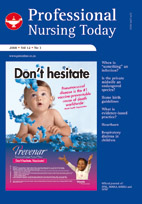What do we understand by Evidence-Based Practice?
Keywords:
Evidence-based practice, nursing, midwifery
Abstract
Against the background of increased demands for health care and quality in a resources constrained environment, nurses and midwives have the responsibility to practice in an evidence-based manner. Evidence-based practice (EBP) is crucial in promoting excellence in nursing and midwifery and provides a systematic approach to decision-making that supports best practice and accountability. When the best available evidence is considered critically, the chances of doing the right thing at the right time for the right patient improves. EBP entails the conscientious, explicit, and judicious use of current best evidence in making decisions about the care of individual patients. EBP further requires integrating individual clinical expertise with the best available external evidence from systematic research, available resources and patient preferences. The crux of EBP is to continuous consider the link between patient care and outcomes (mortality, morbidity, clinical, functional and economic) and best evidence to improve the quality of healthcare and the care individual patients receive. To convince the community that nurses and midwives care with their hearts and minds, each one of us continuously need to reflect on our practice: To what extend is my practice evidence-based? How can I improve the evidence-based quality of my practice? The aim of this paper is to clarify the concept of EBP. The 5-step process of evidence-based practice is illustrated using a scenario. Finally, the implementation of EBP is described and some sources nurses and midwives can use given.
Published
2008-07-01
Issue
Section
Mother and Child Health
By submitting manuscripts to PNT, authors of original articles are assigning copyright to Medpharm Publications (Pty) Ltd. Authors may use their own work after publication without written permission, provided they acknowledge the original source. Individuals and academic institutions may freely copy and distribute articles published in PNT for educational and research purposes without obtaining permission.

